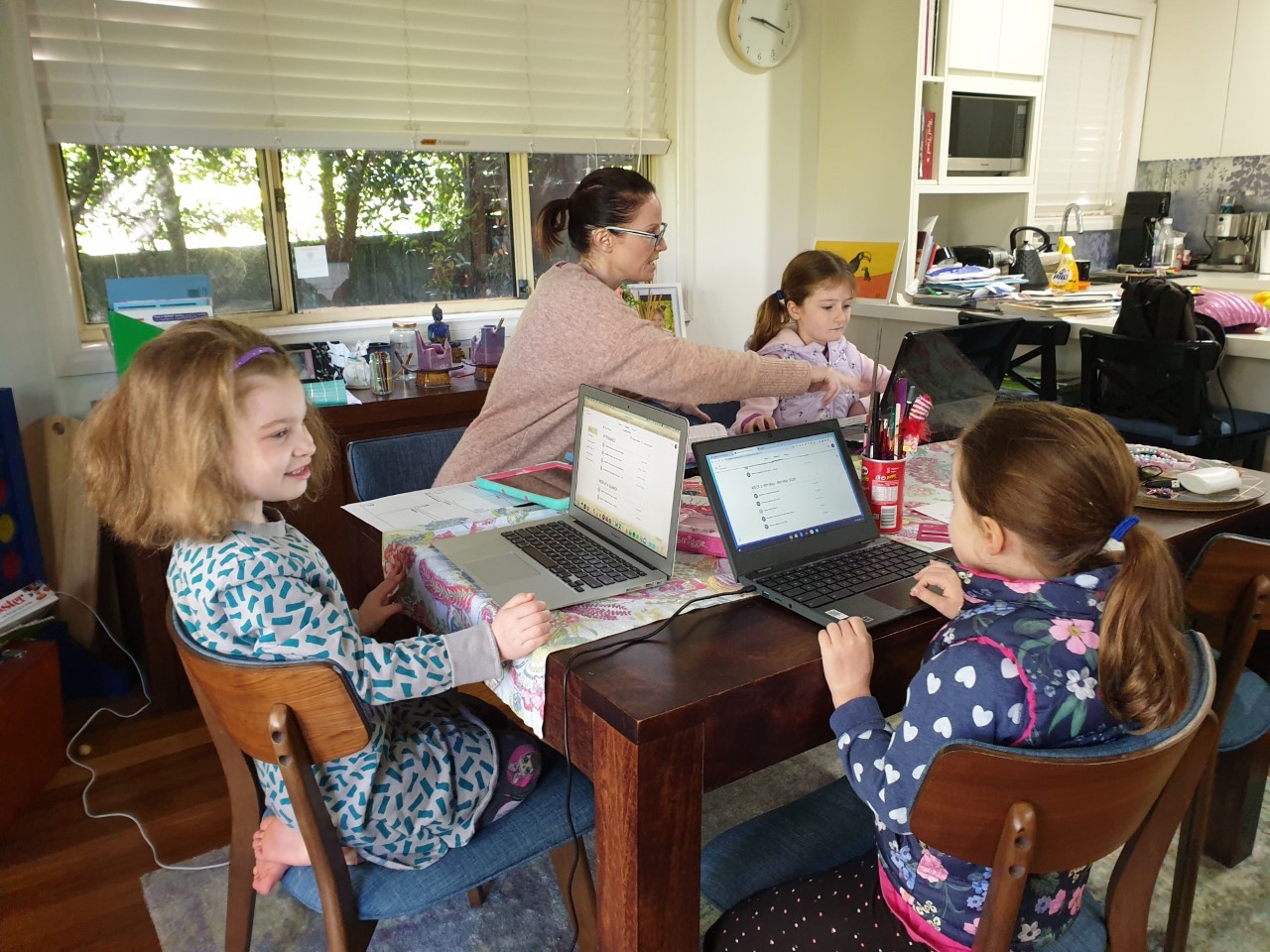The coronavirus pandemic has given rise to unprecedented changes to work environments as many have been forced to work from home. Zoom has become the only form of interaction with work colleagues, and this is ongoing as businesses scramble to create COVID-safe office spaces.
Online meetings conducted to the backdrop of bedroom cupboards, shelves stuffed with books and photos and small children and partners walking in and out of the room has become the norm – something we have all needed to accept.
Yet, despite the newfound chaos many parents have found themselves immersed in over the past 12 months, the world has not completely fallen apart.
So, what have we learned from this experience? Are flexible work environments here to stay? Will this benefit parents and especially working women who have long been calling for greater flexibility and a rethink of traditional working hours?
Do we need more flexible work environments?
There has been a steady rise in women’s workforce participation. The Workplace Gender Equality Agency states that 47.2 per cent of all employed persons in Australia are women. Yet, they overwhelmingly make up the highest proportion of part-time workers at 67.2 per cent. Many women take time out of work to care for children, and return to work part-time.
The Australian Institute of Family Studies reports that only one in 20 Australian fathers take primary parental leave, and the percentage of stay-at-home dads at 3–4 per cent has changed little over the past 30 years. Almost 60 per cent of fathers do not use flexible working arrangements to help care for children compared to one-quarter of mothers.
Professor Marian Baird of the University of Sydney Business School has conducted considerable research into Australian working mothers. She said that for many women, “flexible work options are about the only way they can manage keeping their career and having children”.
But, she explains, this can have both a positive and negative impact on women’s careers. Often the trade-off for greater flexibility leads to disadvantage in salaries, superannuation and career progression.
“The big thing we may have learned from COVID-19 is that men, fathers can work flexibly as well and can work from home. And if that shifts, then it could be a real benefit for working mothers,” said Prof Baird.
“I think employers have seen that people can work from home and can still be productive. And men have experienced a different working life, a different pattern.”
Lucy Adamson, a director at one of the Big Four accounting firms in Australia, agrees. She works full time and is a single mother of three primary-school-aged children.
“I have been very lucky [to have had flexibility around work] but I’ve probably paid for it with my salary,” she said. “I’ve worked on an hourly basis, or I’ve worked from two days a week to three days a week. But I think that realistically when you work flexibly like that it does impact on your ability to progress and your capacity to earn a good wage.”
Professor Marian Baird of Sydney University Business School talks about workplace challenges for women and the effects of coronavirus on their work. Image: supplied
Changes in perception, the breaking down of barriers
One of the most significant impacts of the pandemic has been a change in attitudes towards flexible working.

Ms Adamson said the real changes that have come from the pandemic are in perceptions and in a greater public understanding that people have families.
“In certain organisations, if you’re not present, you’re not there physically, people can’t see you, they think you are not working, ” she said.
“It goes back to that whole credibility thing. Do you know what you are doing? Can you do your job? If I can’t see you, then you’re not as capable as a person I can see in front of me. I think in my career that has definitely happened.
“I would be in a park and my children would be there – you could hear them in the background, and I used to be very stressed about that. Now I think there is just an understanding that people have families and they are around so there is less pressure to silence the children in the background.”
According to Professor Baird, supervisors and managers have seen first-hand that people can work from home. “I do think [COVID-19] will shift that notion of ‘presenteeism’ – of having to be in the office, ” she said.
Working from home is not always an option
This may be positive news for white collar workers, but not everyone can work from home. In fact, many of the jobs that cannot be done remotely employ women. The Australian Bureau of Statistics (ABS) estimates that 2.7 million people were affected by either job loss or a reduction in their hours between March and April last year. Some of the biggest job losses have been in retail and hospitality.
“COVID-19 may have polarised the working population,” said Prof Baird.
In the long term, it will be interesting to see whether the pandemic has had a positive or negative effect on women’s participation at work.
What will the new workplace look like?
In a new study into working environments post COVID-19, KPMG predicts an increase in the volume of people working remotely across all industries, and that the nine-to-five workday will be challenged. It also forecasts a shift towards outcomes rather than input in terms of hours.
“I do think that the nine-to-five model was already breaking down,” said Prof Baird. “It’s certainly true that the working day doesn’t match the school day, which is what a lot of parents, especially mothers. find difficult to deal with.”
The real challenge for better work/life balance and greater equality in the workplace may not be what individuals need to do differently, but how organisations need to evolve and cultural expectations need to shift.
“Men tend not to work as flexibly or take as many flexible work options as women and they’re often denied them in higher proportions than women, so there is a bit more stigma attached to men taking or using flexible work, ” said Prof Baird.
“Employers are much more reluctant to allow men to work flexibly than women.”
Families and the need for childcare have become a lot more visible during the pandemic. Employers need to step up and provide both men and women with opportunities to balance their home and work lives more effectively and create new ways of working that fit in with our modern lives.
Now is the time to make this a real turning point in gender equality.
Have your say, what are your views on more flexible working environments and work/life balance? Leave your comments below.
Images: Jenny Welsh, Tessa Morrison and Debbie Aurelius (supplied).





